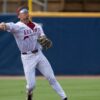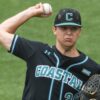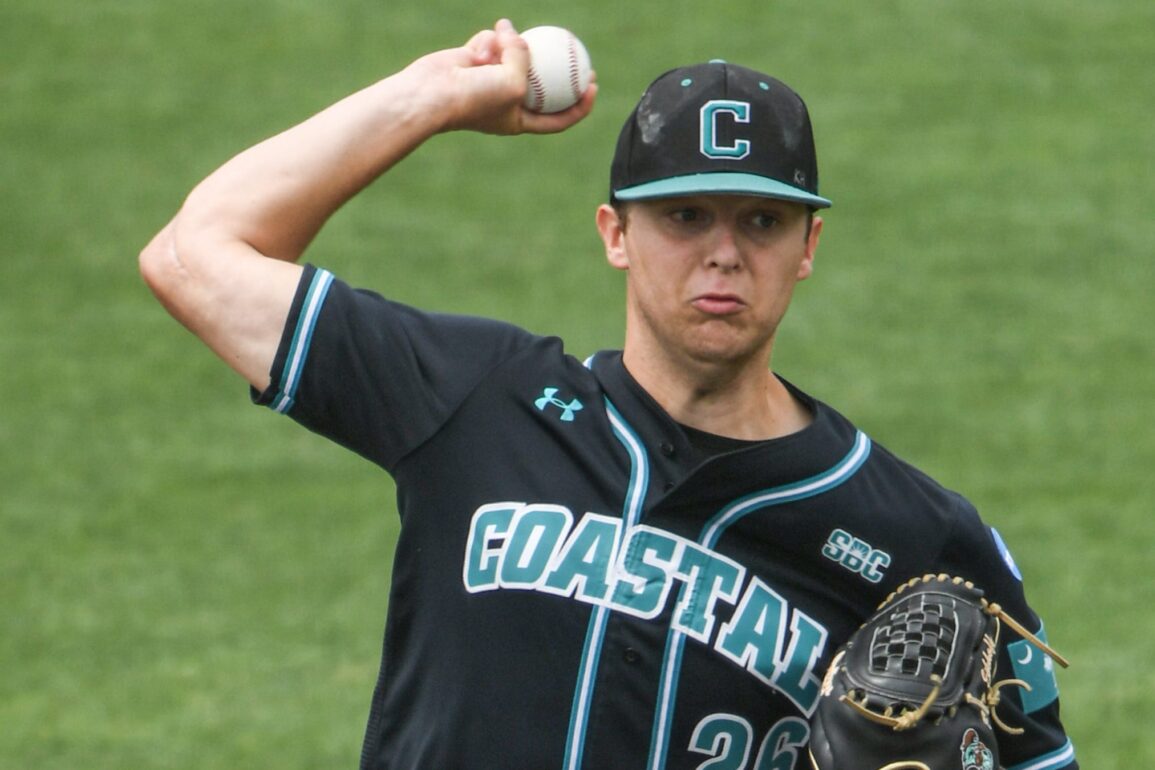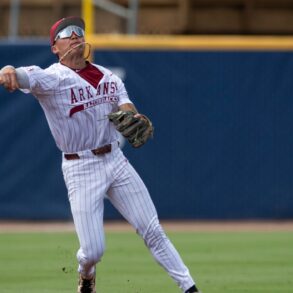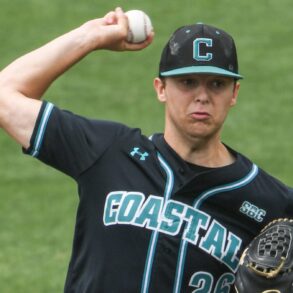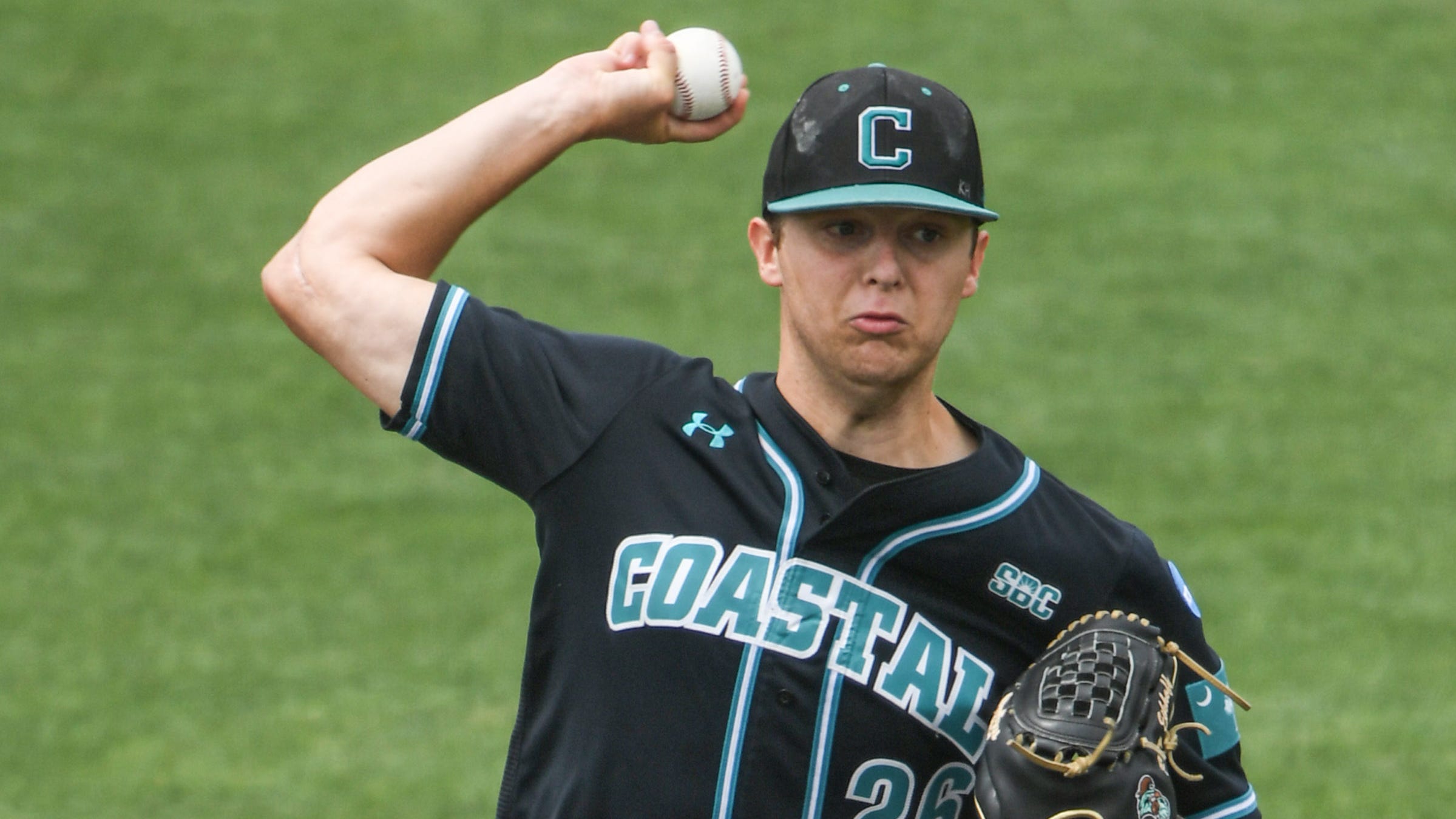
Which NCAA baseball teams could blow up the bracket
The Montgomery Advertiser’s Adam Cole and The Southwest Times Record’s Jackson Fuller break down who could wreck the tournament bracket.
Over the next two weeks, the eyes of the entire college baseball world will be glued on Omaha as the final eight teams of the NCAA baseball tournament compete in the College World Series and play for a national championship.
In that time, an unwelcome opponent at Charles Schwab Field Omaha is bound to make an appearance (or two) as weather continues to transition from spring to summer: Mother Nature.
On top of the traditional and basic rain delays, one of the more common weather delays that can impact CWS games is the dreaded lightning delay.
Last year’s CWS experienced several weather and lightning delays, with the most notable one taking place ahead of the Texas A&M vs. Florida opening round game in Bracket 2 play. An originally scheduled 6 p.m. CT game between the Aggies and Gators didn’t start until 10:16 p.m. CT due to an over four-hour lightning delay.
Action in Omaha for the 2025 CWS gets underway on June 13 with the first of two opening “winner’s bracket” doubleheaders.
Here’s what you need to know:
College World Series, NCAA baseball lightning delay, explained
The NCAA notes that if a lightning strike needs to be seen and heard within at least six miles of an outdoor stadium, then that game must be halted for a lightning delay. Though a lightning delay’s length of time starts at 30 minutes, the total time of a lightning delay can vary — causing perhaps a long night. The reason for the length of time a lightning delay varies is due to lightning strikes that can follow.
Here’s more from the NCAA’s weather/lightning delay policy:
“To resume athletics activities, lightning safety experts recommend waiting 30 minutes after both the last sound of thunder and after the last flash of lightning is at least six miles away, and moving away from the venue. If lightning is seen without hearing thunder, lightning may be out of range and therefore less likely to be a significant threat. At night, be aware that lightning can be visible at a much greater distance than during the day as clouds are being lit from the inside by lightning. This greater distance may mean that the lightning is no longer a significant threat. At night, use both the sound of thunder and seeing the lightning channel itself to decide on when to reset the 30-minute return-to-play clock before resuming outdoor athletics activities.”
College World Series lightning delay strike proximity: How close does a lightning strike need to be?
- Closest proximity: Six miles
- Farthest distance: Eight miles
The NCAA notes that for a lightning delay to be called, a lightning strike needs to be seen and heard within at least six miles of the ballpark and as far as eight miles.
Additionally, on top of following weather satellite radars, the NCAA recommends using the Flash to Bang method to know how close the lightning is:
“If you observe lightning, count the number of seconds until you hear thunder. Divide the number of seconds by five to obtain the distance in miles. Example: If you see lightning and it takes 10 seconds before you hear the thunder, then the lightning is 2 miles away.”
How long are lightning delays at College World Series?
- CWS lightning delay length: 30 minutes
The NCAA notes that once lightning is detected within the area of Charles Schwab Field and the game enters a lightning delay, the game is delayed or suspended for 30 minutes. However, if lightning strikes comes to be detected within that 30-minute window, the 30-minute clock is reset. In other words, for every lightning strike that follows the initial lightning strike, the 30-minute clock is reset.
College World Series weather delay policy
Given the knowledge that Mother Nature can impact one, or multiple, CWS games over the next two weeks, the NCAA and the CWS have a “weather delay policy” on their website.
Here’s what to know from the NCAA website:
- In the event of a weather delay, fans should keep their game ticket.
- If a fan is leaving the stadium during a weather delay, they should stop at a ticket gate to have their ticket scanned out by Charles Schwab Field Omaha staff.
- Reserved and premium mobile seat ticket holders may exit through all gates and have their mobile ticket(s) scanned out.
- If the game is halted and resumed the same day or continued the following day, fans will need the game ticket from the original game to re-enter the stadium for the continuation of play.
- In the event of a total game postponement to the following day (meaning, the game did not begin at its scheduled time), fans should follow the game number listed on their updated mobile ticket.
- There are no refunds on tickets as all games will be played.
- TO RESOLVE ANY TICKET ISSUES, Fans should go to the Box Office near gate 2 on the corner of 13th and Mike Fahey streets.
This post was originally published on this site be sure to check out more of their content.


